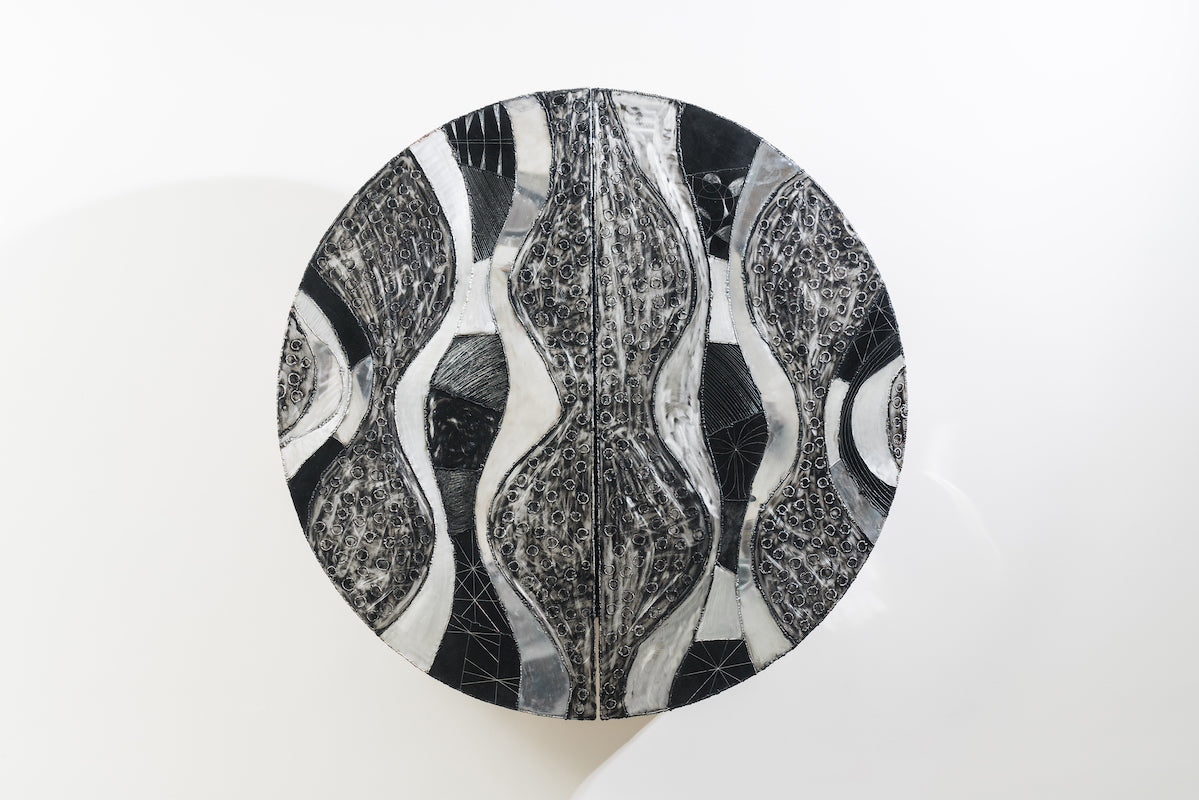Talking Shop
The Argente Collection
Todd Merrill Studio reassembles a rare collection of work from Paul Evans—and Glenn Adamson offers insight into what makes it so special
Among the most recognizable and versatile figures in the American Craft Movement—and arguably the most collectible American furniture designer of the late 20th century—Paul Evans produced a distinctive line of aluminum works under the title Argente (French for silver) from 1965 to 1972. Due to high production costs, alongside inherent difficulties and dangers in the production process, Argente was one of Evans’s shortest-lived collections.
Todd Merrill Studio in New York has reassembled an impressive segment of Evans’ rare and highly sought-after Argente Collection from three distinguished private collections. “Given the scarcity of existing Argente pieces and the infrequent public availability,” Merrill says, “an assembly of this magnitude will possibly never be presented again.”
Alongside the exhibition, the gallery has published a striking catalogue to mark the achievement. What follows is an excerpt from the catalogue—composed by author, curator, and historian Glenn Adamson—that contextualizes this important body of work, offering insight into what makes this collection so special.

The ARGENTE Series 1965-1973
An Essay by Glenn Adamson
In 1965, an exhibition called The Responsive Eye opened at the Museum of Modern Art in New York City, introducing America to the phenomenon of Op Art. Nearby, one very sharp pair of eyes did respond. In general, frustratingly little is known about the artistic influences that helped shape Paul Evans’ ever-evolving sensibility. But looking at the sinuous lines, high-contrast silver and black palette, and the sheer visual dazzle of his Argente line—with its surfaces that seem to somersault in the eye, even though they are almost dead flat—it is hard not to think that artists like Bridget Riley, whose mesmerizing abstractions were included in the MoMA show, were not in his field of view. Even if not, Op was definitely in the air—it was an instant craze in graphic design and even in fashion.

This art historical moment is an intriguing context for the Argente line, one of the most ambitious products that ever came out of Evans’ studio, and also one of the rarest. Though bestowed with the Latin name for silver, on account of its bright metallic surfaces, the line is actually made in aluminum. Even today, this is an unusual material in furniture production; it was far rarer when Argente was introduced in 1965. Though Charles and Ray Eames’s Aluminum Group line had been launched seven years earlier, helping to shift the popular conception of the material from an industrial to a commercial context, Evans’s sculptural use of the material was nearly antithetical to that sort of taut functionalism. In his relatively small production facility—initially located in Lambertville, New Jersey, and from 1969 in Plumsteadville, Pennsylvania—it would not have been possible to die-stamp this recalcitrant metal, as Herman Miller did with the Eames. But when the Evans shop acquired a MIG welder, originally for use on bronze furniture, they learned that the equipment could also help them work with aluminum.

Under the leadership of the master artisan Dorsey Reading, Evans’s team soon worked out a novel technique. They first sheared panels by hand from 1/8” aluminum sheet and then attached them to a wooden carcass, establishing an overall form. Using the MIG welder, Reading and the other artisans then articulated the façade by melting aluminum wire along the seams. Some areas of the surface were buffed (using a felt wheel and white rouge), with others selectively inked with a brush. Finally, further linear elements were welded on and ornament inscribed into the black areas. Slate was employed for table tops and, in one unique case, for a handsome double-pillar desk. Notably, the detail of the surface rendering was entirely left to Reading. Evans would give him a rough drawing on onion skin, occasionally marking out the basic lines of a design on the piece, and then leave him to it. This was a true collaboration between an inventive artist and a gifted maker.

Evans first applied the Argente technique to a trio of experimental artworks, dubbed the Sculptures in the Field, in 1965. This is significant, for it demonstrates that he saw this new vocabulary as implicitly sculptural from the outset. Soon after, when he presented a first group of functional Argente works at America House in New York (the retail outlet of the American Craftsmen’s Council), he recognized this explicitly: “This is a whole new approach to aluminum... which has a great future, because it fits with the mood and designs for many of today’s architects. Essentially it takes to furniture-making because of its sculptural potentials, for instance, my aluminum chest which doesn’t look like a chest.”


The ultimate showpiece for the spectacular Argente aesthetic is the unique Disc Bar included in the present catalogue. Arguably the single most stunning object that ever came out of the Evans shop, it rivals contemporaneous abstract paintings for sheer wall power—indeed, outdoes most of them by virtue of its scale, boldness and reflectivity. ◆
Read more from Adamson about the Argente Collection and peruse the entire catalogue here. The print catalogue is also available from the gallery.
Works from the Argente Collection are available in the Design Miami/ Shop through Todd Merrill Studio.
